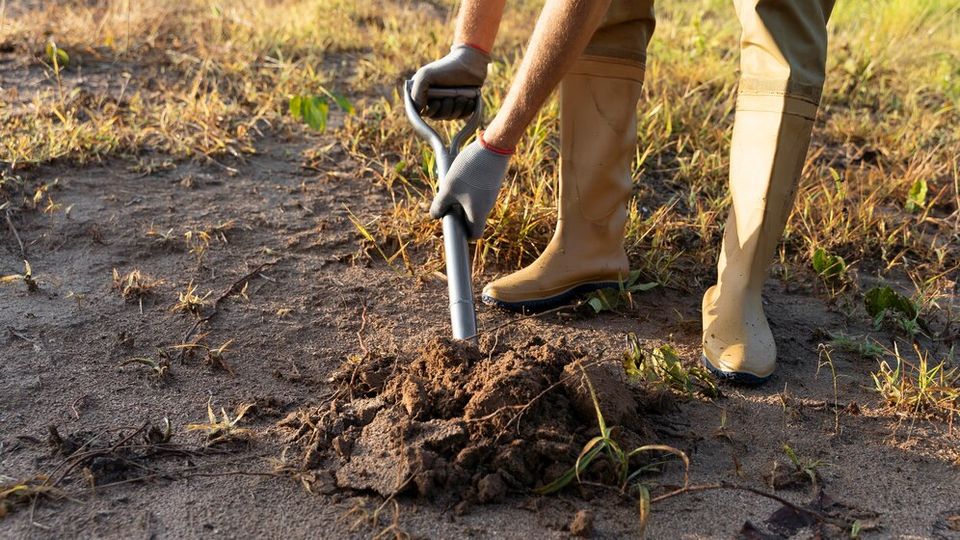Soil modification plays a crucial role in transforming the physical properties of soil to meet the stringent requirements of modern construction and infrastructure projects. It involves various techniques to improve soil strength, durability, and other characteristics to support foundations, roadways, and other structures. Understanding what soil modification is and when it is essential can be the key to successful project outcomes.
Often, ground conditions are not suitable for construction as they stand. Poor soil can lead to unstable foundations, resulting in long-term problems like subsidence and structural failure. That’s where soil modification comes in. By altering the soil's properties through physical, chemical, or biological means, we can create a more stable base for any construction work. This process is not just about enhancing the soil but ensuring the longevity and safety of the structures built upon it.
Our in-depth focus on this topic will provide you with practical insights into the different techniques and their applications, clarifying why and how these methods are indispensable in today's construction landscape. We dedicate ourselves to using state-of-the-art solutions that address and rectify issues found in natural soil conditions, ensuring your projects are built on a firm and reliable foundation.
What Is Soil Modification and When Is It Necessary?Soil modification is the process we use to alter the physical and chemical properties of soil to enhance its suitability for specific construction and engineering needs. This transformation is crucial as it ensures that the soil will support structures with greater stability and longevity. Soil modification becomes necessary when the existing soil conditions are inadequate for proposed construction projects, posing potential risks such as uneven settling, waterlogging, or structural failure.
For instance, soils high in clay content typically expand and contract based on moisture levels, which can severely undermine the foundation of roads and buildings. In such cases, modifying the soil to reduce its plasticity and increase stability can prevent costly damages in the future. We also often engage in soil modification during road construction, airport runway establishments, and large-scale landscaping, where the natural ground needs reinforcement to handle heavy loads or achieve required compaction levels.
Key Techniques in Soil Modification: A Comprehensive OverviewTo address diverse ground conditions, several soil modification techniques have been developed and refined by us over the years. Here is a comprehensive overview of the key methods we use:
1. Lime Stabilization: By adding lime to the soil, we can significantly reduce the soil's moisture-holding capacity, thus increasing its strength and stability. This method is ideal for soils with high clay content, as it helps to reduce shrink-swell potential.
2. Cement Stabilization: Similar to lime, cement is mixed into the soil to harden it and enhance its load-bearing capacity. This technique is perfect for the foundations of heavy structures where durability and strength are paramount.
3. Fly Ash Incorporation: Utilizing by-products from thermal power plants, fly ash serves as an excellent soil modifier, particularly for weak and loose soils. It helps in achieving desired stiffness and bearing capacity while being an environmentally friendly option.
4. Chemical Stabilization: We also use various chemicals like enzymes and polymers that react with the soil to alter its properties, enhancing its firmness and resistance to water.
These techniques not only tailor the soil to meet specific engineering standards but also ensure that the amendments are sustainable, cost-effective, and long-lasting, providing a solid foundation for any infrastructure projects we undertake.
The Benefits of Soil Modification for Infrastructure ProjectsSoil Modification offers several significant advantages that are crucial for infrastructure development. We harness these benefits to optimize the performance and durability of construction projects, from roads to foundations. One of the primary benefits is increased soil strength and stability. By altering the physical and chemical properties of the soil, we can transform suboptimal soil into a robust base capable of supporting heavy loads and structures. This process greatly reduces the risk of subsidence and structural failure over time.
Another key advantage of soil modification is its ability to enhance water resistance in soils that typically absorb and retain moisture. This characteristic is particularly beneficial in preventing heave and swell in clay-type soils, which can lead to severe structural issues. By incorporating soil modifiers, we reduce maintenance costs and extend the lifespan of the infrastructure, ensuring longevity and reduced expenses associated with repairs and rebuilds.
Implementing Soil Modification: Steps and ConsiderationsWhen implementing soil modification techniques, several critical steps and considerations ensure the success of the project. First, a thorough site assessment is essential. We analyze the existing soil conditions, including its type, moisture content, and load-bearing capacity. This assessment informs the choice of suitable modification methods and materials, such as lime, cement, or fly ash, to stabilize the soil effectively.
Following the selection of materials, the next step is the precise application and blending of these modifiers into the soil. We employ advanced equipment to mix these materials uniformly throughout the soil, ensuring consistent stabilization. After mixing, it is crucial to compact the soil to the required density. Proper compaction solidifies the soil-modifier blend and provides the necessary strength and stability for the impending construction.
ConclusionSoil modification is a transformative process that reinforces the earth to meet the demanding requirements of modern infrastructure projects. This method is not just about enhancing soil properties; it's about ensuring the success and durability of construction efforts in an environment-friendly and cost-effective way. From stabilizing bases for new roads to fortifying sub-grade layers for commercial developments, our tailored soil solutions pave the way for resilient and long-standing structures.
To learn more about how our specialized soil modification services can elevate your next project, contact
our soil stabilization contractors at Terra-Firma Stabilization & Reclamation today. Together, we can build a stronger foundation for tomorrow.

